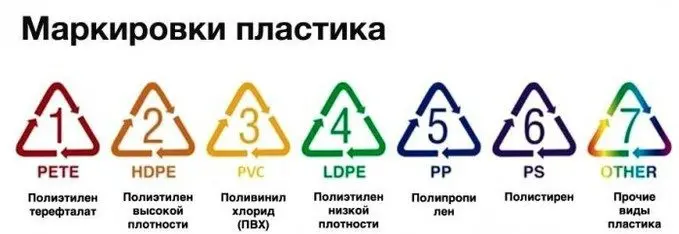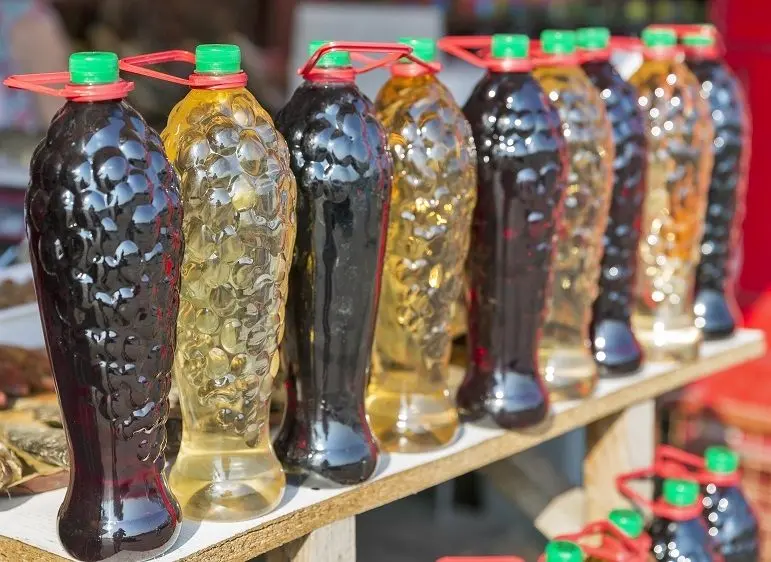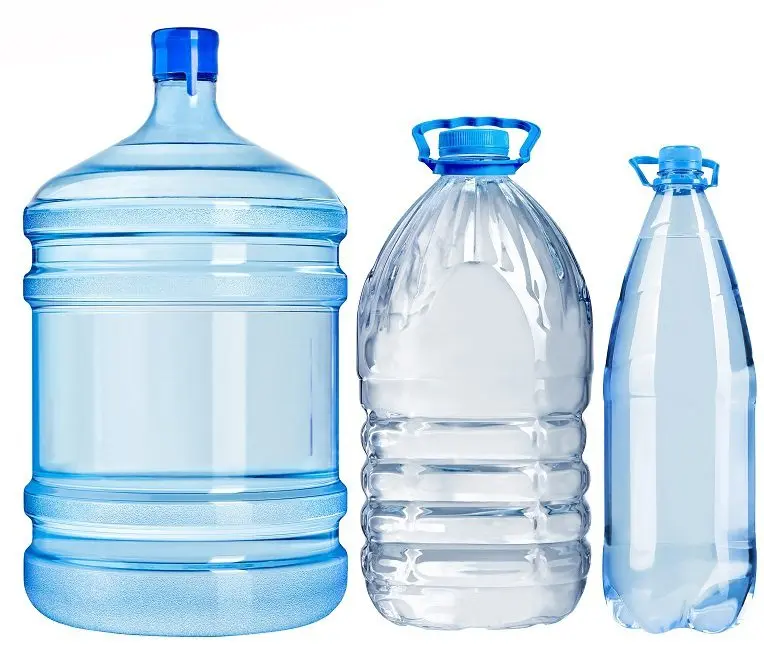Beginning winemakers often do not have enough suitable containers for storing ready-made drinks – dark glass wine bottles with a special cork. The first thing that comes to mind is to pour homemade wine into plastic bottles or three-liter glass jars for preservation. Both methods have both advantages and significant disadvantages. In order not to spoil the drink, a special approach is required.
Attention! The purpose of this article is to consider simple options for the temporary storage of wine in resource-constrained conditions. I am not calling for abandoning traditional bottles, replacing them with plastic containers and cans. It is advisable only in a critical situation and for a short time.
How to store wine in a plastic bottle
There are a lot of negative reviews on the Internet. Often, users complain about the smell or taste of plastic in the wine. Indeed, due to the characteristics of the material, it is very risky to simply pour wine into the first plastic bottle that comes across without understanding the essence of what is happening.
To store wine, only plastic bottles marked PET (PETE) and HDPE (the first two types, usually marked on the bottom) can be used. Plastic with numbers 3-7 is not suitable! But it is worth remembering that chemical elements, even in the composition of PET or HDPE plastic, can react with alcohol, the strength of which is above 18-20%. This does not threaten ordinary homemade wine with a maximum alcohol content of 10-14%, but before pouring fortified wines into plastic containers for storage, I advise you to think about the consequences.

Another problem with plastic is the ability to pass air and other gases, which leads to oxidation and a slow deterioration in the quality of wine during long-term storage.
Given the properties of the material, you can store homemade wine in plastic bottles for no longer than 3 months in a dark room with a temperature of 5-16 ° C.

To avoid contamination of the drink with pathogenic microflora, the appearance of a plastic smell or taste, I advise you to strictly follow the pouring technology:
- Use bottles for drinks and food only. Preferably with a minimal smell, for example, it is very difficult to wash the container in which the beer was stored, the specific aroma of hops remains, which can spoil the wine.
- Check the marking, there should be an inscription PET (PETE) or HDP (number 1 or 2 in a triangle with arrows).
- Rinse the bottle thoroughly with warm water (temperature not higher than 25-30°C). Dry. After drying, sniff, slightly pressing on the edges near the bottom, so that the air inside the bottle approaches the nose. There should be no odors, otherwise throw away the bottle.
- Prepare a disinfectant solution: dilute pharmacy iodine in cold, settled water (proportions – 10 ml of iodine per 25 liters of water). Any other disinfection method suitable for plastics and foodstuffs can be used. Iodine is the simplest and most affordable solution.
- Pour the prepared disinfectant into bottles (preferably to the top or periodically shake incomplete containers). Separately soak in lid solution. Leave on for 45-60 minutes.
- Drain the solution. Fill disinfected plastic bottles with wine, leaving 1-2 cm to the top of the neck. Seal tightly with lids.
- Store in a cellar, basement or refrigerator for no longer than 3 months in an upright position. At least once every 10-15 days, check the organoleptic properties of the wine, if foreign smells or tastes appear, immediately change the container.

Plastic containers labeled PET and HDP are great for fermentation.
Storing homemade wine in jars
When aging wine in ordinary liter or three-liter jars, there is only one problem – how to ensure sealing without harming the drink. During conservation, the jars are rolled up with metal lids or closed with nylon. In case of contact with wine, both of these materials can change the taste for the worse. The metal oxidizes, capron – releases specific substances.
The problem with the cover is solved in two ways. The first and most correct option is to use a glass lid for jars, while be sure to replace the rubber seal with a safe silicone one. The main thing is that the jar is airtight and does not let air through. In the case of a glass lid, the shelf life of wine in a dark glass jar is 2-3 years (in fact, this is a full-fledged bottle), in transparent glass – 1 year. Fill the container to the top.

The second, easier option is to leave 4-5 cm of free space in the jar so that the wine does not touch the lid. Banks should be stored vertically at rest, without shaking during transportation. With nylon lids, you can additionally secure the drink by attaching food foil to the inside of the lid (securely fasten so that the foil does not fall to the surface). The disadvantage is that the wine will slightly oxidize under the influence of the air remaining in the jar, but this is not terrible and practically does not affect the taste.
In a dark, cool place, the wine evaporates weakly, so the contact of alcohol vapor with the lid material is minimal and does not cause problems for a short time period. The recommended shelf life of homemade wine in a jar with a metal or nylon lid is 3-6 months.
Attention! Wash and sterilize jars thoroughly before filling. I do not recommend using a container in which dairy products were previously stored due to a persistent smell that instantly spoils the wine.









